Stockholm School (Economics)
 From Nwe
From Nwe | Schools of economics |
History of economic thought |
| Pre-modern |
|---|
Early economic thought |
| Early Modern |
Mercantilism · Physiocrats |
| Modern |
Classical Economics |
| Twentieth-century |
Institutional economics · Stockholm school |
The Stockholm school, or Stockholmsskolan, is a school of economic thought that refers to a loosely organized group of Swedish economists that worked together, in Stockholm, Sweden, primarily in the 1930s. Although initially limited in their recognition internationally due to the problem of language (they published primarily in Swedish), to the extent that they received no credit for theories they developed prior to John Maynard Keynes whose work was greatly acclaimed. Later, however, two of this group were awarded the Nobel Memorial Prize in Economicss for their work: Bertil Ohlin with James Meade for the Heckscher-Ohlin theory of international trade, and Gunnar Myrdal shared with Friedrich von Hayek for their work on the theory of money and economic fluctuations, Myrdal gaining fame for his sociological approach which led to cumulative causation theory.
The Stockholm School economists were strongly politically active, and several of their ideas were implemented in Sweden. In post-World War II Europe, their theories were considered valuable as a middle ground between a capitalist economy and a socialist economy, as the goal of social equality was highly prized but many did not want to lose the individual motivation to succeed through entrepreneurship.
Overview
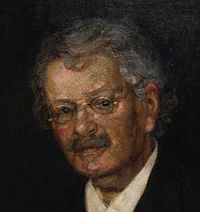
The movement's name, "the Stockholm school," was launched in a 1937 article by Bertil Ohlin in the influential Economic Journal. The article was in response to the publication of John Maynard Keynes' General Theory of Employment, Interest and Money in 1936, and its purpose was to draw international attention to Swedish discoveries in the field, many of which had predated Keynes' work. However since hardly anyone in the English speaking world could read Swedish, their work had remained unknown until later translation. Still, it is clear that they came to the same conclusions on macroeconomics and the theories of demand and supply independently of, and at the same time as, Keynes. The reason is that, like Keynes, these economists were inspired by the works of Knut Wicksell, a Swedish economist, who wrote at the turn of the twentieth century:
A general rise in prices is therefore only conceivable on the supposition that the general demand has for some reason become, or is expected to become, greater than supply. This may seem paradoxical, because we have accustomed ourselves, with J.B. Say, to regard goods themselves as reciprocally constituting and limiting the demand for each other. And indeed ultimately they do so; here, however, we are concerned with precisely what occurs, in the first place, with the middle link… Any theory of money worthy of the name must be able to show how and why the monetary or pecuniary demand for goods exceeds or falls short of the supply of goods in given conditions (Wicksell 1906: 159-160; emphasis in original).
The "Political Economy Club," created a year before the end of World War I, was a small gathering of trained economists who were interested in scientific work in economics. Including Knut Wicksell, Eli Heckscher, Gustav Bagge, Bertil Ohlin, David Davidson, and half a dozen "docents" (associate professors), the membership numbered around 20 economists. Bertil Ohlin recalled their meetings:
The meetings of this club were certainly the most stimulating "seminar" one could imagine. One of the members opened a discussion and then followed a free exchange of opinions. The subjects were chiefly theoretical. Knut Wicksell, who was 67 years old when I became a member, was probably the most stimulating participant of all the members (Ohlin 1977).
Thus, the Stockholm School emerged through the inspiration of Wicksell. The economists from the Stockholm School took an active part in practically every debate of importance in Sweden since the turn of the century. For example, Bertil Ohlin demonstrated enormous productivity: in the years 1932-1943 he published on average almost 70 articles a year in the Stockholms-Tidningen newspaper; by 1960, he had published approximately 12,000 in the paper (Findlay et al. 2002). Issues discussed there included the eight-hour workday, the New Economics of the 1930s, and forestry economics. Brinley Thomas (1936), in the first account in English of the Stockholm School, emphasized the influence that professional economists of the School appeared to have on public affairs. Their publications in newspapers soon gave way to political activity by the School's members.
Again, Bertil Ohlin is a typical example. He began as a scholar, then wandered back and forth for a time across the boundary between the academic and political worlds, eventually becoming a full-time politician. Similarly, in 1933 Gunnar Myrdal was appointed as the successor of Gustav Cassel to the Lars Hierta Chair of Political Economy and Public Finance at the University of Stockholm and, in addition to his teaching activities, was active in Swedish politics, being elected to the Senate in 1934 as a member of the Social Democratic Party.
Leading members
The best known scholars of the institution were arguably the economists Eli Heckscher and Bertil Ohlin, who developed the so called Heckscher-Ohlin theory of international trade. Ohlin later received the Bank of Sweden Prize in Economic Sciences in Memory of Alfred Nobel. Heckscher is known as the founder of economic history as an academic discipline in Sweden. Gunnar Myrdal also was influential, not only as an economist but also for his sociological studies, particularly on racism in the United States.
Knut Wicksell
Knut Wicksell (1851-1926) was the inspiration behind the Stockholm School. A neoclassical economist, he thought that if the price of one commodity increased, it would be explained by either the increasing demand or the decreasing supply for that commodity, so if the prices of all commodities increased this would also be explained in the same way. However, according to Say’s law in neoclassical economics, such discrepancy between the demand and the supply is not feasible.
Wicksell revealed two concepts concerning the interest rate: “Monetary interest rate” and “natural interest rate.” While the former reflects the monetary side, the latter reflects the real side. Say’s law holds only when these two interest rates are the same. Wicksell insisted that this is a very special case for the monetary economy in the real world. Therefore, he analyzed the price change mechanism in cases where these two interest rates separated.
If the monetary interest rate falls lower than the natural interest rate, most businesses increase their investment. As a result, the aggregate demand will be larger than the aggregate supply. This provides them with a good chance to set the price of their commodities higher. However, if many firms think in the same way, the price will rise without them receiving the expected benefit, and they must expect that the price level will continue to rise in the future. This results in a circular and cumulative mutual relationship between the increasing investment and the higher price level: “The cumulative inflation process.” If the monetary interest rate is higher than the natural interest rate, the opposite will occur: “The cumulative deflation process.” Wicksell concluded that whenever there is discrepancy between the two interest rates, such processes continue without any end.
In laying out this theory, Wicksell began the conversion of the old quantity theory based on supply and demand into a full-blown theory of prices. The Stockholm school took this insight and developed their own version of macroeconomics, which in some ways resembled the later Keynesian Economics.
David Davidson
David Davidson (1854–1942) completed his doctorate in 1878 and was appointed professor at Uppsala in 1880. In a strictly geographical sense, as he was not teaching in Stockholm, he might not be regarded a member of the Stockholm School. His intensive collaboration with Wicksell and other Stockholm economists, however, makes him a bona fide Stockholm School member.
Davidson's research ranged over broad areas, primarily the theory of capital, theory of value, and monetary and finance theory. His dissertation dealt with theory of capital, to which he made an extremely substantial contribution. He anticipated to a large extent the thesis of Böhm-Bawerk, not least as regards his analysis of the foundations of interest.
Davidson's ideas never achieved an international breakthrough, though, probably because he wrote in Swedish. If he had written in a more internationally familiar language, he would probably have attained quite a significant place in the history of economic doctrine. In Sweden, however, he was highly appreciated both for his theory of capital and for his monetary theory, as well as the norm of monetary policy which bears his name.
In the 1920s, a debate raged between Wicksell and Davidson concerning the objectives of monetary policy. Wicksell maintained that the goal should be to keep the level of prices constant and, with changes in productivity, to let wages vary in proportion to productivity. Davidson, on the other hand, promulgated the thesis that, with changes in productivity, wages should remain unchanged and that prices should vary in inverse proportion to productivity.
"Davidson's norm" was justified based on two arguments. The first involves business-cycle policy, with the goal to hinder the emergence of cumulative processes of the sort Wicksell had studied. The second involves equity, such that in periods of improved productivity people living on a fixed income, such as those living on pensions or on bank interest, would also benefit from the enhanced production.
In his 1924 Penningpolitikens mål ("Objectives of Monetary Policy"), Erik Lindahl argued in favor of applying Davidson's norm. He based this argument primarily on the equity aspect. In the early 1930s Gunnar Myrdal took up the question of monetary equilibrium, and he too concluded that Davidson's norm should be followed. The same opinion informed the Report of the Commission on Unemployment in 1935. This same thesis was propounded in a number of publications which, in the first half of the 1940s, discussed the shape of economic policy after the war. Among the advocates of Davidson's norm were Dag Hammarskjöld, who put forth his arguments in a 1944 article, and then minister of finance Ernst Wigforss, who developed the Labour Movement's post-war program in Sweden.
Karl Gustav Cassel
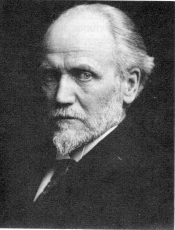
Gustav Cassel (1866-1945), a founding member of the Swedish school of economics along with Knut Wicksell and David Davidson, remained a silent giant in twentieth century economics. However, he also holds the unfortunate distinction of belonging to that group of influential economists who are intensely disliked by everyone.
Cassel taught economics at the University of Stockholm from 1903 until 1936. Gunnar Myrdal and Bertil Ohlin were his most prominent students. In his major work, Theory of Social Economy (1918), he dropped marginal productivity in favor of fixed coefficient technology; following up on his 1899 contribution, utility theory was dropped:
This purely formal [utility] theory, which in no way extends our knowledge of actual processes, is in any case superfluous for the theory of prices… [T]his deduction of the nature of demand from a single principle, in which so much childish pleasure has been taken, was only made possible by artificial constructions and a considerable distortion of reality (Cassel 1918, 81).
The Stockholm School did its utmost to dissociate itself from Cassel due to his bitter rivalry with their beloved master, Knut Wicksell. Although Walrasians applauded his general equilibrium work, they cringed at his attacks on utility theory. The Marshallians disliked him for exactly the opposite reason. The Austrians resented him for having helped bury Böhm-Bawerk's theory of capital and interest. And, finally, the Keynesians had no love for one of the most vociferous opponents of the Keynesian Revolution.
All this was not helped by Cassel's abrasive personality and his refusal to acknowledge the work of other economists. As Hans Brems noted:
A writer less generous than Cassel would be hard to find. Marx at least paid tribute to Quesnay and Ricardo. Cassel paid tribute to nobody. Walras had written the first system of simultaneous equations of general equilibrium. Pareto had purged it of any measure of sensations. Cassel followed both but mentioned neither… We must not treat Cassel the way he treated others. We must respect him as a pioneer (Brems 1986, 158).
Eli Heckscher
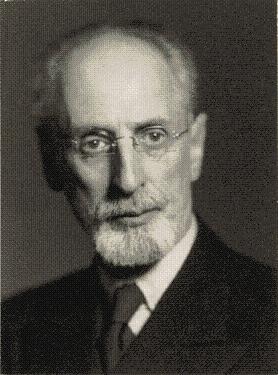
Eli Heckscher (1879–1952) established economic history as an independent academic discipline in Sweden. He taught at the Stockholm School of Economics from 1909 and was a founder and director of the Stockholm Institute for Economic History. He wrote mainly on economic history, producing such works as The Continental System (1918) and Mercantilism (1931). He originated the concept of commodity points which limit the fluctuation of paper currencies, and argued in favor of free trade, asserting that differing productive factors were responsible for trading advantages of differing commodities among nations.
Heckscher, in his younger days, was a social conservative, but after World War I he emerged, much like Cassel, as a full-fledged liberal with strong sympathy toward British nineteenth century economic liberalism.
A few years before Heckscher’s death Svend Laursen and his wife prepared a translation from the Swedish of Heckscher’s 1919 article for the 1949 Readings in the Theory of International Trade (edited by Howard Ellis and Lloyd Metzler). This article received a revised translation in Heckscher-Ohlin Trade Theory (Flam and Flanders 1991). Although the primary objective of this latter work was to provide a translation, for the first time, of Bertil Ohlin’s 1924 dissertation, Handelns Teori ("The Theory of Trade"), it also served to confirm the importance of Heckscher’s pioneering article, written five years previously.
It is perhaps ironic that, although almost the entire academic career of Eli Heckscher was concerned with issues of economic history, this single article on international trade theory was sufficient to award him the lead position in a “hyphen trophy” in the title, “Heckscher-Ohlin Trade Theory” (Ronald 1956).
Bertil Ohlin
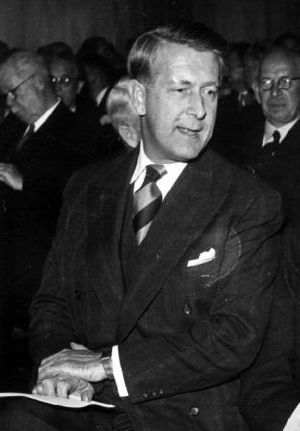
In 1931, Bertil Ohlin (1899-1979) succeeded Eli Heckscher, his teacher, as a professor of economics at the Stockholm School of Economics. In 1933, Ohlin published a work that made him world renowned, Interregional and International Trade. The focus of his analysis was how factor supply reactions, location, taxation, social policy, and risk affect international division of labor.
Ohlin built an economic theory of international trade developed from earlier work by Heckscher and his own doctoral thesis. It is now known as the Heckscher-Ohlin model, one of the standard model economists use to debate trade theory. The model was a break-though because it showed how comparative advantage might relate to general features of a country's capital and labor, and how these features might change through time.
The model provided a basis for later work on the effects of protection on real wages, and has been fruitful in producing predictions and analysis; Ohlin himself used the model to derive the Heckscher-Ohlin theorem, that nations would specialize in industries most able to utilize their mix of national resources efficiently. Today, the theory has been largely disproved, yet it is still a useful framework by which to understand international trade.
Ohlin, a politician as well as an eminent scholar, always made it clear that he counted himself as a liberal even in his youth. The keystone of his liberal outlook, exactly as with Cassel and Heckscher, was the conviction that an economic system based on individual property rights and competition would foster high growth, and that, in the long run, growth was crucial to the development of prosperity. One of his expressed goals was, just as with Cassel, to “counteract economic superstition” (Ohlin 1972, 61-62, 184).
Ohlin was party leader of the liberal Liberal People's Party from 1944 to 1967, the main opposition party to the Social Democrat governments of the era, and from 1944 to 1945 he was minister of commerce in the wartime government.
Erik R. Lindahl
Probably the most theoretically rigorous member of the Stockholm School, Erik Lindahl (1891-1960) was the only member of that group who stayed wholly within academia. One of the reasons for Lindahl’s importance was that he carried on the tradition from Knut Wicksell. His work thus formed a major link between Wicksell and younger Swedish economists.
Lindahl's contributions to economic theory, however, extend beyond his Wicksellian roots to embrace much of what is contained in modern Neo-Walrasian theory. His formulation of the concept of sequence economies and intertemporal equilibrium (Lindahl 1929, 1930) was the first rigorous attempt at this. Since then, his work on "sequence analysis" has been given greater emphasis through the work of Frank Hahn and Roy Radner.
Lindahl's solution to the pricing of public goods is another noticeable achievement, brought into modern economics by Duncan Foley. Lindahl’s monetary theory provided a starting point for Myrdal’s analysis of monetary equilibrium. Myrdal started from Lindahl’s discussion of the concept of the normal rate of interest, although the purpose of Lindahl’s discussion was related to why he did not use the concept in his analysis.
Gunnar Myrdal
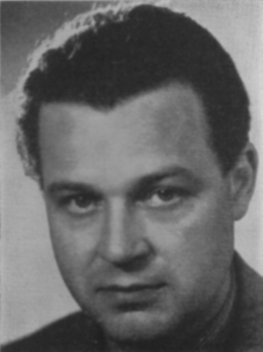
Gunnar Myrdal (1898-1987) began his studies in the current of the Stockholm school. As he said, his theory of cumulative causation—that poverty creates poverty—originated in Wicksellian monetary theory. However, he came to apply his theory to more practical problems after his study on racial discrimination of black people in the United States (Myrdal 1944). Myrdal experienced three academic stages in his life: A theoretical economist as a member of Stockholm school, a politician, and an “institutional economist” as he called himself. Among his more than thirty honorary degrees, Myrdal shared the Nobel Memorial Prize in Economics with Friedrich von Hayek in 1974.
Myrdal's cumulative causation theory (CC theory) includes institutional and political factors besides demand and supply. He insisted that both economic and non-economic factors should be included in the analysis due to the substantial importance of both types. Myrdal argued against the hypothesis that there is an automatic tendency for a social system to stabilize through change. By contrast, he argued that such a change brings about other changes that intensify in a particular direction—the system becomes more polarized with the poor becoming poorer and the skilled becoming more skillful (Myrdal 1957).
Myrdal’s theory is a theory of “development,” by which he meant more than mere increasing production; it includes values. Based on his methodology of “explicit value premises,” he built his economic theory accordingly. Myrdal recognized the “virtuous circle” in developed countries, and the “vicious circle” in underdeveloped countries. Following his value premises, he insisted on the necessity of a “welfare world.”
Myrdal’s theory allows the possibility and necessity of social reform. It is different from Thorstein Veblen’s standpoint of insisting on “the natural selection of institutions.” In fact, Myrdal’s position on policies is so unique that it might well be called “political implications in evolutionary economics.” Although Nicholas Kaldor (1970) also advocated strategic policies on the basis of cumulative causation theory as he further developed it, Myrdal’s CC theory has a special methodology of “explicit value premises” and admits various value judgments and various optimal policies. In this way it remained different from Kaldor’s political proposals.
Besides his work in economics and sociology, Myrdal was also a politician. He was elected twice to Sweden's Parliament as senator (1934-1936, 1942-1946), was minister for trade and commerce (1945-1947), and served as the executive secretary for the United Nations Economic Commission for Europe (1947-1957).
Legacy
Two major theories, both having brought the scientists involved Nobel Prizes, were a direct product of the School. Heckscher-Ohlin theory explains why countries trade goods and services with each other. According to the theory, a country specializes in the production of goods that it is particularly suited to produce. Countries in which capital is abundant and workers are few, therefore, specialize in production of goods that require significant capital. According to this theory, specialization in production and trade between countries generates a higher standard of living for all the countries involved.
Myrdal-Kaldor cumulative causation theory, on the other side, has been used for analyses of regions with uneven development. In one practical example from Estonia, it was shown that return from investment in education is greater in economically stronger regions. Employees’ low qualification and lack of human capital in a region determine inefficient production and economic loss. Therefore, in order to overcome the effect of the CC theory, intervention on the part of government was deemed necessary to finance and promote investment in labor force education.
In addition to these major scientific break-throughs, the Stockholm School economists were strongly politically active. In fact, with the exceptions of Lindahl and perhaps Davidson, all of them had "parallel political careers” or vacillated between academia and politics. Their theories were embraced and implemented as national policy by the two powerful arms of the Swedish labor movement; the Swedish Social Democratic Party and the national labor union, the Swedish Trade Union Confederation.
In the post-World War II geopolitical situation with two rival predatory political blocks, their theories also received wide international appeal as a "third way," a middle ground between a capitalist economy and a socialist economy. The objective of this "third way" was to achieve high levels of social equality, without stifling private entrepreneurship.
References
ISBN links support NWE through referral fees
- Brems, H. 1986. Pioneering Economic Theory, 1630-1980: A Mathematical Restatement. Baltimore, MD: Johns Hopkins University Press. ISBN 0801826675.
- Cassel, Gustav. Leipzig: C. F. Winter. [1918] 1923. Gustav Theoretische Sozialökonomie. English translation 1923. The Theory of Social Economy. London: T. F. Unwin.
- Cassel, Gustav. 1934. Teoretisk socialekonomi. Stockholm: Kooperativa förbundets förlag.
- Ellis, Howard S., and Loyd A. Metzler. 1949. Readings in the Theory of International Trade. The Blakiston Company.
- Findlay, Ronald, Lars Jonung, and Mats Lundahl. 2002. Bertil Ohlin: A Centennial Celebration, 1899-1999. Cambridge, MA: MIT Press. ISBN 0262062283.
- Flam, Harry, and M. June Flanders. 1991. "Introduction" in Heckscher-Ohlin Trade Theory. Cambridge, MA: The MIT Press. ISBN 978-0262082013.
- Heckscher, Eli. [1918] 2006. The Continental System: An Economic Interpretation. Cosimo Classics. ISBN 978-1602060265.
- Heckscher, Eli. [1931] 1994. Mercantilism. (Two volumes). London: Routledge. ISBN 0415113571.
- Henriksson, R. 1979. Eli F Heckscher och svensk nationalekonomi. Ekonomisk Debatt. Translated as "Eli Heckscher—The Economic Historian as Economist" in The History of Swedish Economic Thought. Ed. Bo Sandelin. New York, NY: Routledge. ISBN 0415021308.
- Kaldor, Nicholas. 1970. The Case for Regional Policies. Scottish Journal of Economics 17: 337-348.
- Lindahl, Erik. [1924] 1939. Penningpolitikens medel (Means of Monetary Policy). Malmö: Förlagsaktiebolaget. Partly translated into English and included in Lindahl (1939).
- Lindahl, Erik. 1929. The Place of Capital in the Theory of Price. Ekonomisk Tidskrift.
- Lindahl, Erik. [1939] 1970. Studies in the Theory of Money and Capital. A.M. Kelley. ISBN 0678006555.
- Lindahl, Erik (ed.). 1958. Knut Wicksell—Selected Papers on Economic Theory. London: Allen and Unwin.
- Lundahl, Mats. 2005. "Knut Wicksell and the Causes of Poverty: Population Growth and Diminishing Returns" in Economists and Poverty: From Adam Smith to Amartya Sen, ed. Daniel Rauhut, 138-176. New Delhi: Vedams. ISBN 8179360164.
- Magnusson, L., and Gustav Cassel. 1991. "Popularizer and enigmatic Walrasian." In The History of Swedish Economic Thought, ed. B. Sandelin. New York, NY: Routledge. ISBN 0415021308.
- Myrdal, Gunnar. 1957. Economic Theory and Underdeveloped Regions. New York, NY: Harper and Row.
- Myrdal, Gunnar. 1996. An American Dilemma. New Brunswick, NJ: Transaction Publishers. ISBN 1560008571.
- Ohlin, Bertil. [1933] 1967. Interregional and International Trade. Cambridge, MA: Harvard University Press. ISBN 978-0674460003.
- Ohlin, Bertil. 1972. Ung man blir politiker. Stockholm: Bonniers.
- Ohlin, Bertil. 1977. Autobiography Nobelprize.org. Retrieved December 16, 2008.
- Patinkin, Don. 1978. On the Relation between Keynesian Economics and the Stockholm School. The Scandinavian Journal of Economics.
- Ronald, Jones W. 1956. Factor Proportions and the Heckscher-Ohlin Theorem. Review of Economic Studies.
- Thomas, Brinley. 1936. Monetary Policy and Crises: A Study of Swedish Experience. London: Routledge.
- Wicksell, Knut. 1904. Mål och medel i nationalekonomien. Ekonomisk Tidskrift 457-474.
- Wicksell, Knut. [1906] 1967. Lectures on Political Economy. Augustus M Kelley Pubs. ISBN 0678065209.
|
|||||
Credits
New World Encyclopedia writers and editors rewrote and completed the Wikipedia article in accordance with New World Encyclopedia standards. This article abides by terms of the Creative Commons CC-by-sa 3.0 License (CC-by-sa), which may be used and disseminated with proper attribution. Credit is due under the terms of this license that can reference both the New World Encyclopedia contributors and the selfless volunteer contributors of the Wikimedia Foundation. To cite this article click here for a list of acceptable citing formats.The history of earlier contributions by wikipedians is accessible to researchers here:
- Stockholm_school_(economics) history
The history of this article since it was imported to New World Encyclopedia:
- History of "Stockholm school (economics)"
Note: Some restrictions may apply to use of individual images which are separately licensed.
↧ Download as ZWI file | Last modified: 02/06/2023 13:45:10 | 33 views
☰ Source: https://www.newworldencyclopedia.org/entry/Stockholm_School_of_Economics | License: CC BY-SA 3.0
 ZWI signed:
ZWI signed: KSF
KSF